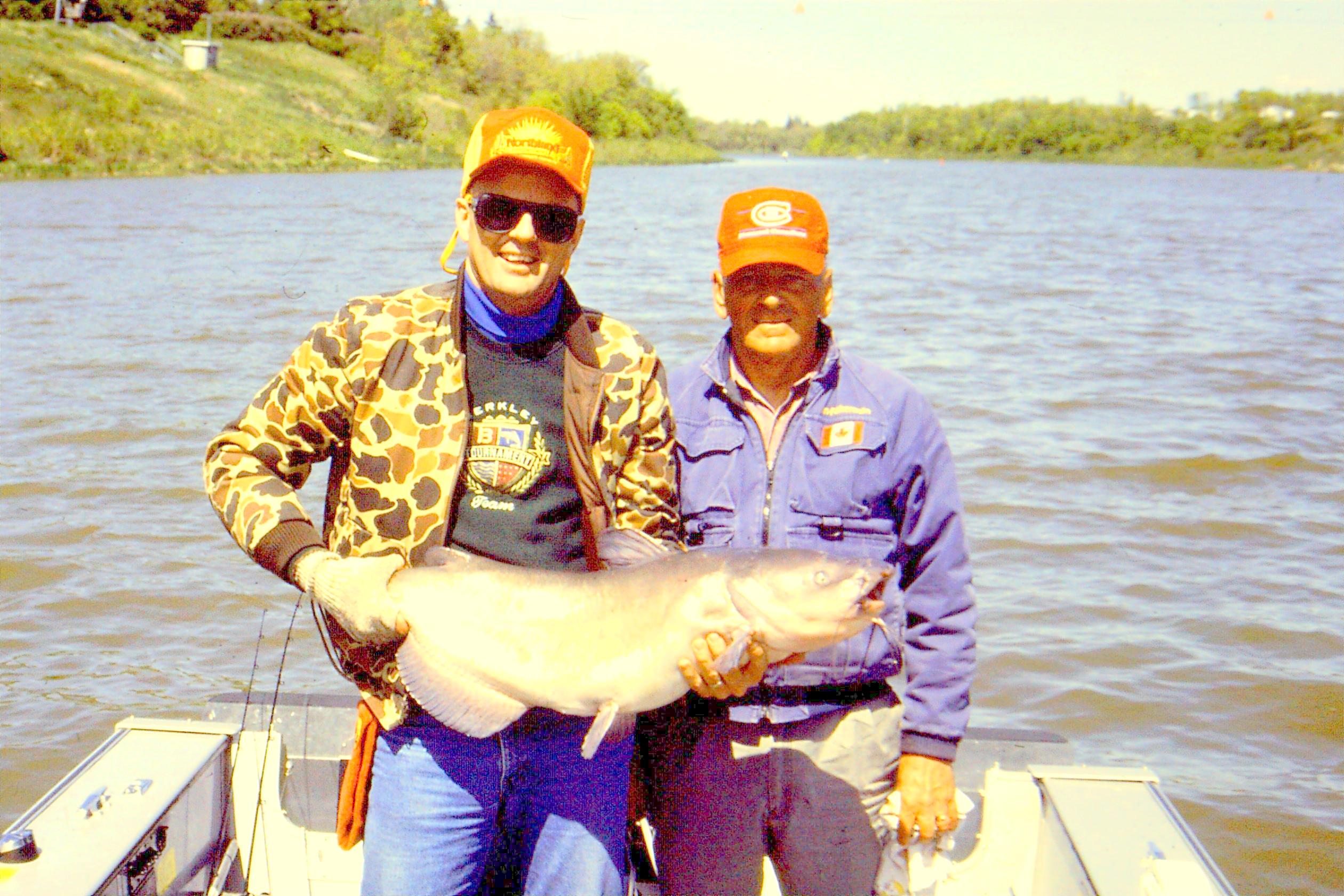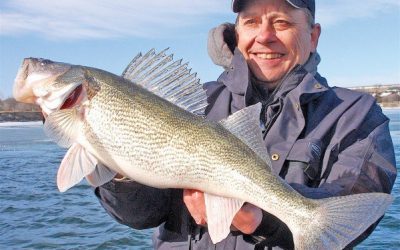At the seminars and on my web page, there are many questions on what type of tackle is needed to get into the sport of fishing.
The information in this column will give you information on the basic tackle needed if you are thinking about going fishing.
This is a good time to start checking out the fishing department of a sporting goods store, as this is when they start to restock their shelves.
As I mentioned in previous columns, when it comes to fishing you need to keep it as simple as possible. There are thousands of lures, hooks and baits out there; the only problem is that many of these baits have caught more anglers than fish.
It’s best to start with the basics, the hook, line and sinker, your basic live bait rig.
Hooks
When it comes to hook size, you’ll want to match your hook to the species of fish that you’ll be going after. I’d recommend that you purchased snelled hooks, those that are
pre-tied, having the monofilament line tied to the hook as snelled hooks are easier to attach to a swivel or rig.
A good rule of thumb is if your fishing for small fish such as trout or panfish is to use a size 4, 6 or 8 hooks. Use a long shank hook when ever possible as this makes it easier to remove the hook from a smaller fish’s mouth.
For bass or larger fish, you can use a size 1, 2, 1/0 or 2/0 hook. Walleye anglers prefer a shorter more compact hook in a size 6 or 8. The main thing to remember is to match the size of your hook with the size of the mouth of the fish that you hope to catch.
Line
As far as line is concerned, depending on what type of fish you’re after and where you’ll be fishing for them, I’d suggest you use the lightest light possible. Generally, if you’re fishing water that’s not full of snags a 6 or 8-pound test for walleyes works well. If you’re fishing for bass or catfish in or near weeds, brush, submerged timber or areas where there are a lot of rocks and snags it’s a good idea to go with 12-pound test or heavier
The colder the water temperature, the less active the fish are and the more finesse you’re going to need to catch the fish, so as water temps drop, so does my line diameter as smaller baits perform better on lighter line.
The larger the line diameter, the less action you’re going to get out of your bait. This is especially true when using diving bait as heavier line has more resistance and won’t allow your bait to go as deep (crankbait) or sink as fast (jigs).
In addition, heavier line has more memory, it won‘t lay out as nice as lighter line, and not allowing your lure to work properly.
One thing that you really need to pay attention to is the knot you use to attach your hook or lure to the line.
Avoid the old overhand knot as it won’t hold, will slip, come loose or break, use a good knot such as the Palomar or TRILENE Knot. Illustrations of these and other useful knots are found at www.animatedknots.com/indexfishing.php
Before you pull your knot tight, be sure to wet the line, if you don’t, the friction created by the line rubbing together will melt the line.
“Sinkers”
The amount of weight or sinker that you’ll attach to the line depends on what type of water you’ll be fishing. When fishing in a river, dealing with current, it may require a heavier sinker. If you’re fishing from a boat, you probably won’t need as much weight because you’re fishing vertically.
I carry an assortment of split shot, a few 1/4 oz. and 3/8 oz. sinkers. With these, I can fish just about any body of water in the Midwest. If you need a little more weight, it’s easy to add more weight or attach a small split shot above your weight.
The basic rule on what weight to use is to use the smallest weight possible.
I know what some of you are saying, “What about fishing in the heavy current in the river?”
To be real honest with you very few fish will be in that heavy current as it takes a lot more energy for them to fight the current than it does to sit behind a point, sandbar or submerged rock pile where there is little or a reduced amount of current.
Sure, you’ll find some fish in the fast water, but the majority of them will be behind something that breaks the current (current breaks) like those that I mentioned earlier.
If you use too much weight, and a fish tries to inhale it, as most fish do, and the bait doesn’t move, many fish will move on.
Crappie Rigs are another item that you might want to try. A Crappie rig is a pre-tied two-hook rig with a swivel on the top that you tie to your line and then attach your sinker to the snap at the bottom.
Now that we’ve covered the basics, let’s talk about some other lures that you might want to try.
Bait
Nothing is more natural, in appearance, movement and smell than live bait; nightcrawlers, minnows, leeches etc. The thing you need to remember when it comes to live bait is to use fresh bait and if it doesn’t swim or wiggle replace it. You can still catch some fish using dead stinky bait, especially catfish. However, with most species of fish, it’s the action, the movement that draws the fish to your bait.

Fresh is best when it comes to using livebait, the exception to the rule is when fishing for channel catfish as channel’s will eat almost anything they can get in their mouth including stink-bait, liver, dead shad, and cut bait. This line-class world record cat was caught by the author on the Red River near Selkirk Manitoba on a smelly piece of frozen sucker.
Crankbaits
Crankbaits are a minnow shaped diving lure that attaches to your line. Crankbaits are easy to use as all you need to do is cast the lure out and crank it back. Crankbaits run at different depths, so make sure that you don’t grab a deep diving lure when you’re intending on fishing shallower water.
There are a couple of ways that you can attach the crankbait to your line, one is with a snap or snap swivel and another is to tie your line to the split ring at the front of the bait.
Snaps and snap swivels make it a lot easier to switch baits and allow the crankbait to work properly. I use the smallest swivel I can get by with, as I don’t want anything to distract the fish from my crankbait. The other option that you have is to use a loop knot, which is simply a knot with a loose loop that allows the crankbait to move back and forth.
The reason you don’t want to tie a standard fishing knot directly to your crankbait is that the slides up tight against the eye of the crankbait, which can restrict and limit the built in action of your crankbait.
Most crankbait manufacturers list the depth their lure will run on the package and if you don’t find that information on the box, look at the bill of the lure. The larger the bill the deeper the lure dives.
Lure Color
Color is another thing that anglers talk about a lot. The color of the jig or spinner or crankbait seems to be a common subject among anglers. I use several colors and there are colors that I prefer over others. I’m not to sure if the fish know the difference, but I seem to take most of my deeper water fish on florescent colors such as chartreuse and florescent range. I’ve found that in certain parts of the Missouri River blue will outperform other colors. Don’t ask me why, because I don’t understand it, I just know that blue works well in some areas.
I’ve tried to figure it out when I was scuba diving. I’d have different colored lures dropped to different depths and really didn’t see much difference in the colors, although the florescent colors seemed to show up deeper than the plain colors. Once you get to a point where there is no light penetration, everything turned black, so I couldn’t come up with any concrete answers to my questions.
Since my eyes are different from that of a fish, I don’t see how anyone can say that one color is better than another. I just know that at times it does make a difference. The only conclusion that I arrived at was that chartreuse worked the best for me on walleyes. The reason for this is simple. Seventy-five per cent of the time when I’m fishing for walleyes, I’ll use a lure that has at least some chartreuse on it. It’s a confidence thing, whatever you feel confident in, use it and you’ll catch more fish. My grandfather Butch had a saying that made a lot of sense. “You can’t catch fish if you keep pulling your line out of the water and changing lure colors.”
There are a million and one lures out there in every color imaginable. Stick with the basics and fishing will come easy. The more complicated you make it, the more it becomes like work and fishing is suppose to be an escape from the office and the complicated life.
Don’t let fishing become as hectic, if you do, you’re defeating the purpose of going fishing!




0 Comments